Agar-Agar Salad has always been my go-to summer merienda that brings back memories of hot afternoon siestas at my Lola's house in Bataan.
The way the chilled, creamy mixture coats the gulaman strips and sweet fruit cocktail creates this perfect balance of textures that instantly cools you down.
While this classic Filipino dessert graces every special occasion from Christmas to fiestas, I find myself making it most during scorching summer days when my kids need something refreshing yet filling.
What is Agar-Agar Fruit Salad?
Agar-Agar Fruit Salad (gulaman at prutas) is a chilled Filipino dessert that combines gelatinous agar-agar strips with sweetened cream and fruit cocktail. This no-bake treat features translucent jelly strips suspended in a rich mixture of condensed milk and all-purpose cream, studded with colorful fruit pieces. Popular at celebrations and during summer months, it balances sweet and creamy flavors with refreshing textures.
Jump to:
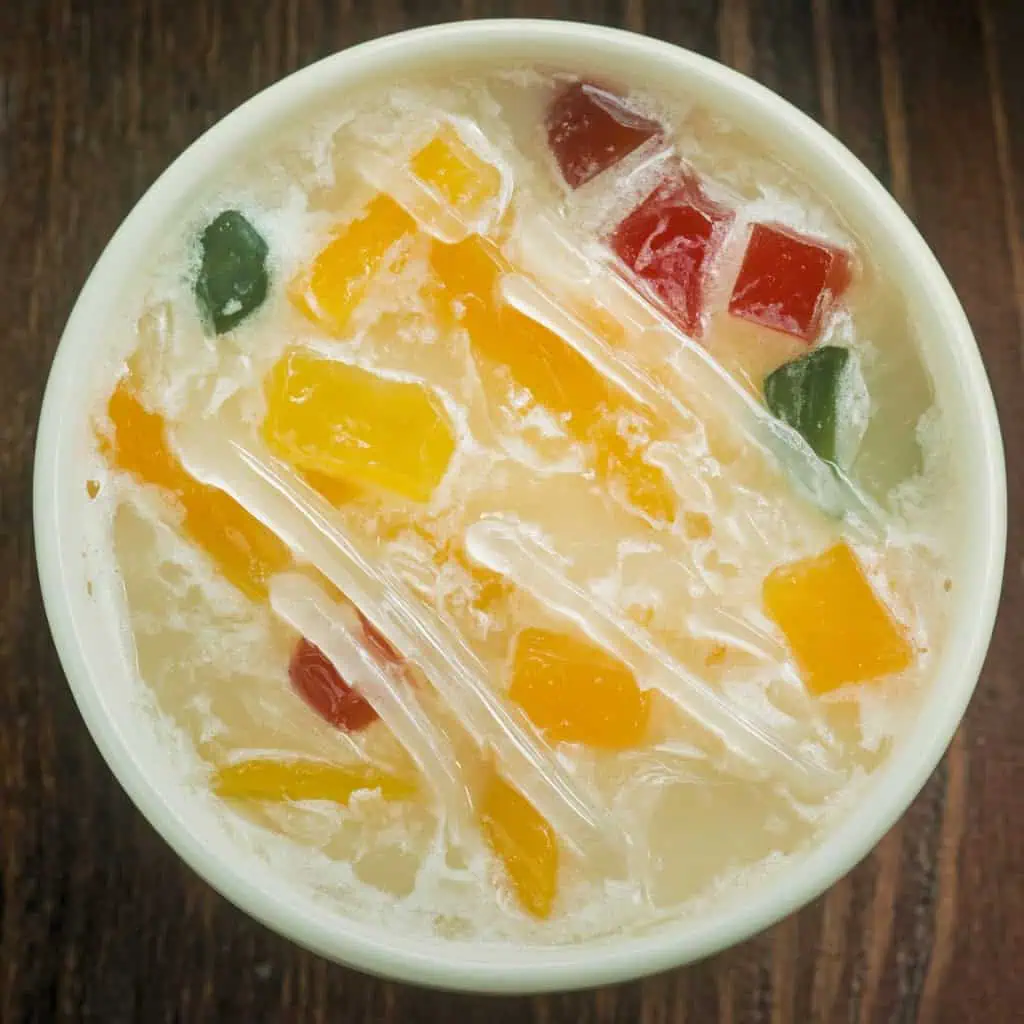
Why You'll Love This Recipe
- Make-ahead friendly
- Budget-friendly party dessert
- Customizable flavors and fruits
- Light and refreshing
- No baking required
Ingredients
Each component in this recipe serves a specific purpose, creating a perfect balance of flavors and textures. The agar-agar provides a refreshing, chewy base that's more heat-stable than regular gelatin.
Fruit cocktail offers colorful variety and natural sweetness without extra preparation. All-purpose cream creates a silky, luscious texture, while condensed milk adds just the right sweetness and richness that binds everything together.
This combination creates the signature creamy-yet-light profile that makes this dessert so beloved and refreshing.
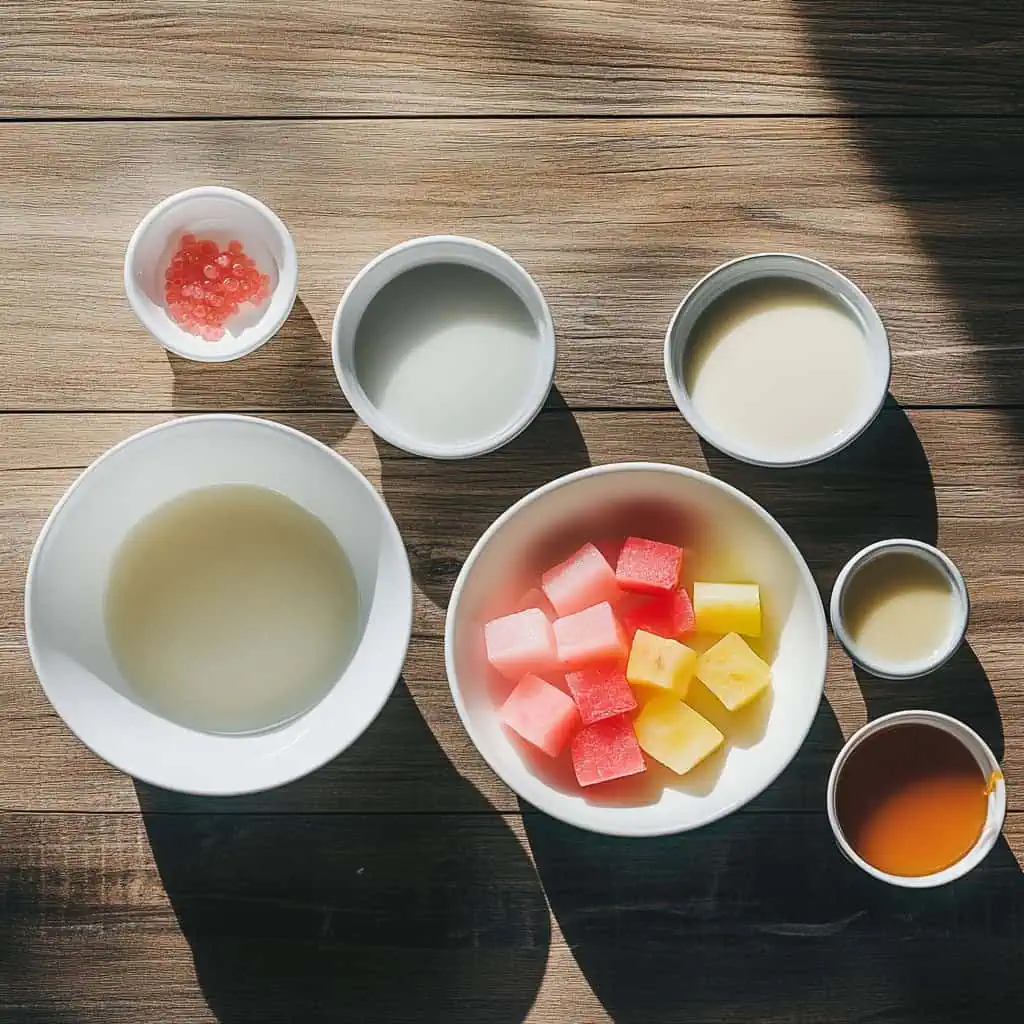
For the Jelly Base (Gulaman):
- 4 tablespoons agar-agar powder
- 2 liters water
- 1 tablespoon flavoring extract (optional - vanilla, pandan, or lemon work well)
For the Cream Mixture:
- 1 can (850g) fruit cocktail, drained
- 2 cans (250ml each) all-purpose cream
- 1 can (370ml) condensed milk
Equipment
- Large pot (kaldero) - For cooking the agar-agar mixture until it dissolves completely and begins to thicken. The size allows for proper stirring without spillover.
- Rectangular pan - Provides a flat surface for the agar-agar to set evenly, making it easier to cut into uniform strips.
- Whisk - Essential for thoroughly combining the agar-agar powder with water and preventing lumps from forming.
- Sharp knife - Needed for cutting the set agar-agar into thin, precise strips without tearing the delicate jelly.
- Large mixing bowl - Accommodates all ingredients with enough space to fold everything together gently without spillage.
- Measuring spoons - Ensures precise measurement of agar-agar powder and flavorings for consistent results.
- Measuring cups - Allows for accurate measurement of liquids and other ingredients for balanced flavor and texture.
- Spatula - Used for folding the ingredients together without breaking the delicate agar-agar strips.
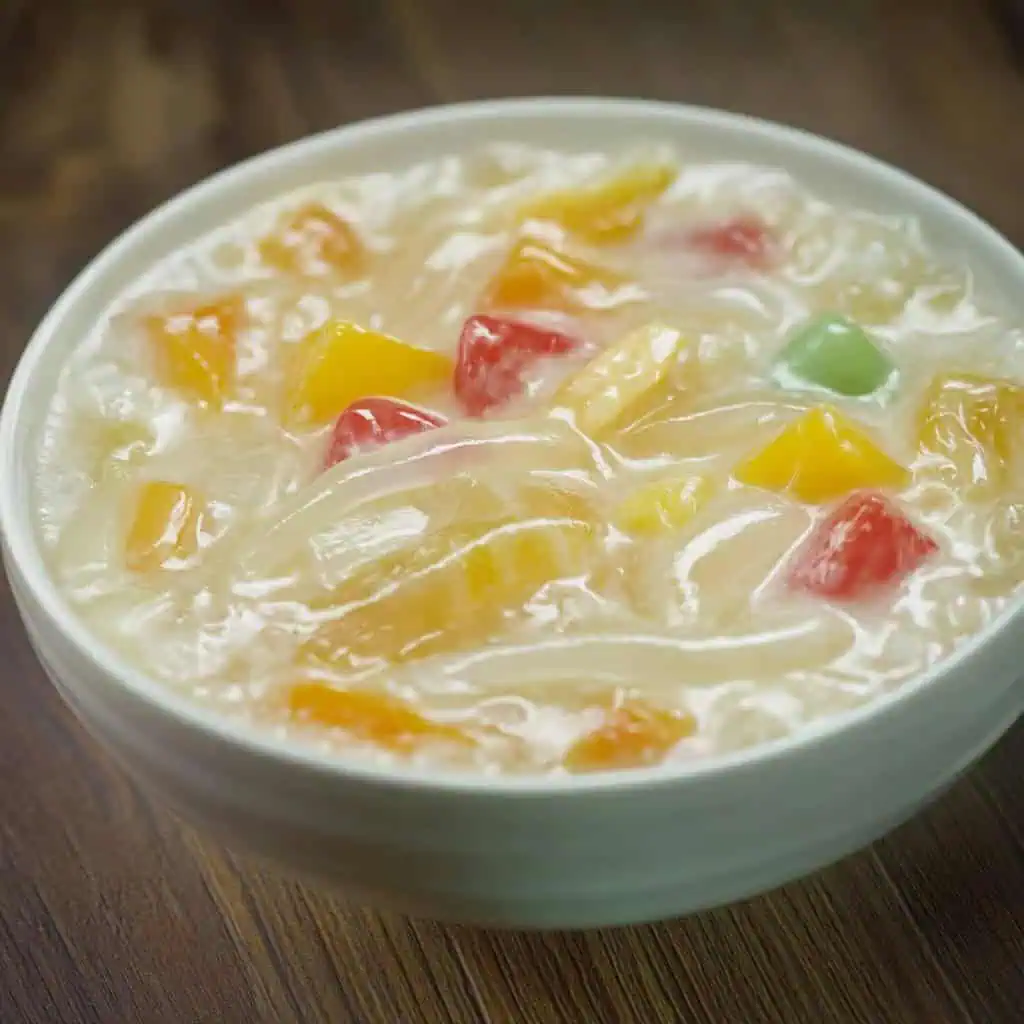
How To Make
- Start by combining agar-agar powder and water in a medium pot over medium heat. Stir until the powder completely dissolves, about 3-4 minutes.
- Pour in your chosen flavoring extract and keep stirring until the mixture starts to boil. Cook until it thickens slightly, about 5 minutes. You'll know it's done when the liquid coats the back of your spoon.
- Pour the hot mixture into a rectangular pan. Let it cool on your counter until it becomes firm, about 1 hour. You can test if it's ready by gently touching the surface - your finger shouldn't leave a mark.
- After it's firm, use a sharp knife to cut it into thin strips. First cut in straight lines one way, then cut across to make long, thin pieces.
- In a large bowl, combine your drained fruit cocktail, all-purpose cream, and condensed milk. Mix these together gently until everything is well combined.
- Add your cut-up agar-agar strips to the cream mixture. Using a spatula, fold everything together carefully so you don't break the strips. If the mixture feels too thick, add 2 tablespoons of the fruit cocktail syrup.
- Cover your bowl with plastic wrap and put it in the refrigerator for at least 2 hours or overnight. Serve it cold, and if you like, top with a cherry before serving.

Tips from Lola's Kitchen
For perfect agar-agar every time:
- Always measure your water precisely - too much water will prevent proper setting
- Use cold water for clearer gulaman that's more visually appealing
- Stir constantly while heating to prevent the mixture from sticking to the bottom
- Let the agar-agar cool completely before cutting to prevent breaking
- Cut gulaman with a sharp knife dipped in water for cleaner cuts
For the creamiest mixture:
- Drain fruit cocktail thoroughly using a colander for at least 10 minutes
- Chill your mixing bowl in the refrigerator for 15 minutes before combining ingredients
- Fold ingredients rather than stirring vigorously to maintain the texture
- For special occasions, reserve a few colorful fruit pieces to sprinkle on top as garnish
- Allow at least 4 hours of chilling time for the flavors to fully develop
Substitutions
Fruit cocktail alternatives:
- Fresh fruits like mangoes, bananas, and pineapple (drain well after cutting)
- Nata de coco (coconut gel) for added texture
- Kaong (sugar palm fruit) for a traditional Filipino touch
- Canned peaches or fruit cocktail in juice instead of syrup for less sweetness
Dairy alternatives:
- Condensed milk → table cream + sugar (1 cup cream + ⅓ cup sugar)
- All-purpose cream → heavy whipping cream (slightly whipped)
- All-purpose cream → coconut cream for a dairy-free version
- Condensed milk → sweetened coconut condensed milk for dairy-free option
Agar-agar alternatives:
- Plain gelatin (use 3 tablespoons instead of 4 tablespoons agar-agar)
- Pre-flavored gulaman powder (reduce added sugar accordingly)
- Flavored gelatin mixes (omit the flavoring extract)
Troubleshooting
My agar-agar won't set properly:
- Check your powder-to-water ratio - too much water prevents setting
- Ensure the powder completely dissolved before cooling
- Some brands require longer cooking time - simmer until the mixture slightly thickens
- Make sure you're using agar-agar, not regular gelatin (they set differently)
My salad is too sweet:
- Add more plain agar-agar strips to balance the sweetness
- Use fruit cocktail packed in juice rather than syrup
- Reduce condensed milk by up to ¼ cup
- Add a squeeze of fresh lemon juice to cut through the sweetness
My mixture is too runny:
- Drain fruits longer before adding to the cream mixture
- Chill the bowl and ingredients before mixing
- Let it set longer in the refrigerator (up to overnight)
- Add 1-2 tablespoons of drained fruit cocktail syrup at a time until desired consistency
My gulaman strips broke into small pieces:
- Cut only when completely set
- Use a sharper knife
- Cut with a gentle sawing motion rather than pressing down
- Add strips to the cream mixture very gently, folding rather than stirring
Storage & Reheating
Refrigeration:
- Store covered in the refrigerator for up to 3 days
- Use an airtight container to prevent absorption of other food odors
- Place plastic wrap directly on the surface before covering to prevent a skin from forming
- The texture is best within the first 24 hours
Do not freeze:
- Freezing will damage the texture of both the agar-agar and the cream mixture
- If mixture separates slightly during storage, gently fold together before serving
Serving after storage:
- Best served chilled directly from the refrigerator
- Let sit at room temperature for 5 minutes before serving if you prefer a less firm texture
- Stir gently before serving if any separation has occurred
- Add fresh fruit garnish just before serving for the best appearance
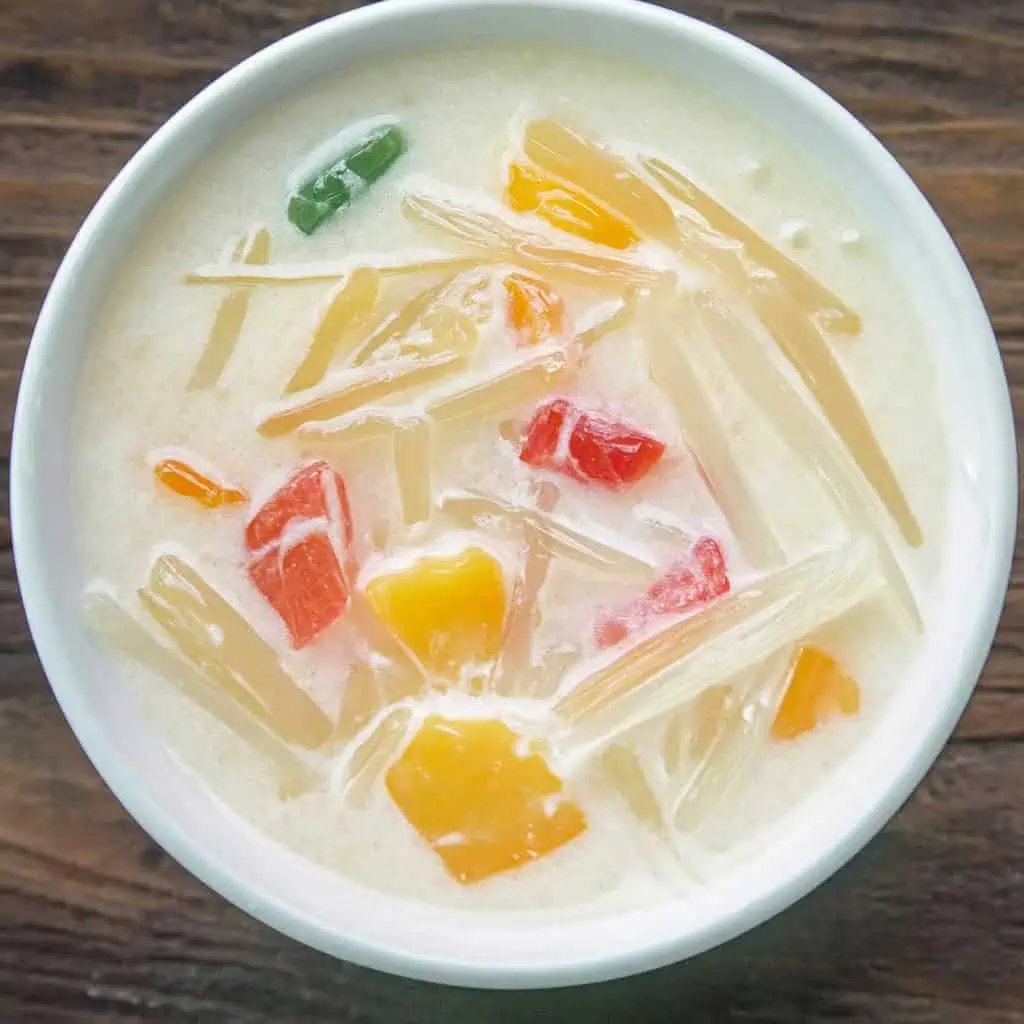
FAQ
Can I make this dessert ahead of time?
Yes, this dessert is actually better when made ahead. Prepare it up to 24 hours in advance for the best flavor and texture, as the time allows the gulaman to absorb the creamy flavors.
How long does the gulaman take to set?
Typically, agar-agar sets in about 1 hour at room temperature. Unlike regular gelatin, it doesn't require refrigeration to set, though chilling afterward improves the texture.
Can I reduce the sugar content in this recipe?
Absolutely! You can reduce the sweetness by using less condensed milk (try reducing by ¼ cup), substituting fruit cocktail packed in juice instead of syrup, or using light cream alternatives.
Why use agar-agar instead of regular gelatin?
Agar-agar sets more firmly than gelatin and remains solid at room temperature, making it perfect for tropical climates. It's also plant-based (derived from seaweed), making it suitable for vegetarian diets.
Can I add alcohol to this recipe?
Yes, you can add a small amount (2-3 tablespoons) of rum or brandy to the cream mixture for an adult version. Add it after combining the cream and condensed milk.
How do I know if my agar-agar is cooked properly?
The liquid should coat the back of a spoon, and when you run your finger through it, the line should remain clear. Overcooking won't affect setting but might make the texture too firm.
Can I use colored gulaman for a more festive look?
Absolutely! Use different colored agar-agar powders to create a rainbow effect. Prepare each color separately and cut into strips before combining with the cream mixture.
Is there a dairy-free version of this recipe?
Yes, substitute the condensed milk and all-purpose cream with coconut cream and sweetened condensed coconut milk for a delicious dairy-free alternative.
Related
Looking for other recipes like this? Try these:
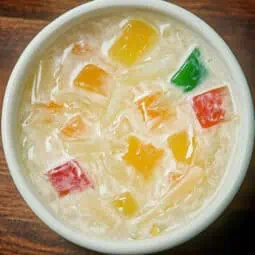
Filipino Agar-Agar Fruit Salad (Gulaman at Prutas)
Equipment
- Large pot (kaldero) for cooking gulaman
- Rectangular pan (lalagyan) for setting jelly
- Whisk (Panghalo) for mixing ingredients
- Sharp knife (kutsilyo) for cutting jelly
- Large mixing bowl (mangkok) for final assembly
- Measuring spoons (kutsara pansukat) for precise measurement
- Measuring cups (tasa pansukat) for precise measurement
Ingredients
For the Jelly Base (Gulaman):
- 4 tablespoons agar-agar powder gulaman
- 2 liters water tubig
- 1 tablespoon flavoring extract optional
For the Cream Mixture:
- 1 can 850g fruit cocktail, drained
- 2 cans 250ml each all-purpose cream (krema)
- 1 can 370ml condensed milk (kondensadang gatas)
Instructions
- Start by combining agar-agar powder and water in a medium pot over medium heat. Stir until the powder completely dissolves, about 3-4 minutes.
- Pour in your chosen flavoring extract and keep stirring until the mixture starts to boil. Cook until it thickens slightly, about 5 minutes. You'll know it's done when the liquid coats the back of your spoon.
- Pour the hot mixture into a rectangular pan. Let it cool on your counter until it becomes firm, about 1 hour. You can test if it's ready by gently touching the surface - your finger shouldn't leave a mark.
- After it's firm, use a sharp knife to cut it into thin strips. First cut in straight lines one way, then cut across to make long, thin pieces.
- In a large bowl, combine your drained fruit cocktail, all-purpose cream, and condensed milk. Mix these together gently until everything is well combined.
- Add your cut-up agar-agar strips to the cream mixture. Using a spatula, fold everything together carefully so you don't break the strips. If the mixture feels too thick, add 2 tablespoons of the fruit cocktail syrup.
- Cover your bowl with plastic wrap and put it in the refrigerator for at least 2 hours or overnight. Serve it cold, and if you like, top with a cherry before serving.
Tips from Lola's Kitchen
- Use cold water for clearer gulaman
- Cut gulaman when completely set to prevent breaking
- Drain fruit cocktail well to prevent watery salad
- Chill mixing bowl before combining ingredients
Nutrition
The Story Behind Filipino Agar-Agar Salad
Agar-agar salad traces its roots to the Philippines' rich culinary history, influenced by both Spanish colonization and Chinese trading. While gelatin-based desserts came from Spanish influence, the use of agar-agar (gulaman) originated from Chinese traders who introduced this seaweed-derived ingredient to Philippine shores. The dessert gained prominence during American occupation when canned goods like condensed milk and fruit cocktail became readily available.
The dessert's evolution mirrors the Filipino's innovative spirit in adapting foreign ingredients into uniquely local creations. Originally served during special occasions like fiestas and Christmas, it later became a popular everyday dessert, especially during summer months. The combination of gulaman's cooling properties with creamy dairy reflects the Filipino preference for contrasting textures and the practical need for refreshing treats in a tropical climate.
Today's version, featuring strips of gulaman rather than cubes, emerged in the 1960s when home cooks discovered this preparation method created a more interesting texture. This adaptation quickly spread through community cookbooks and word-of-mouth, becoming the standard preparation method we know today. The dish exemplifies the Filipino talent for transforming simple ingredients into beloved comfort foods that span generations.
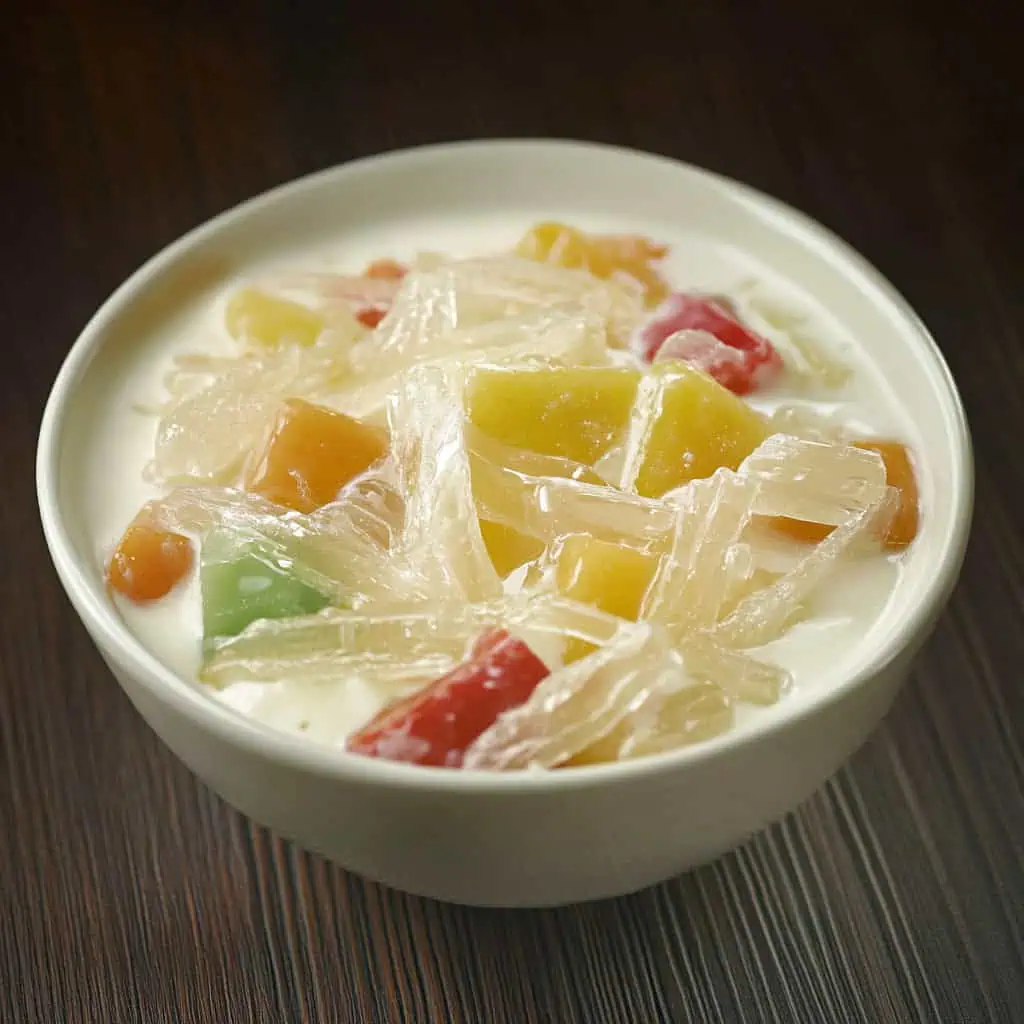






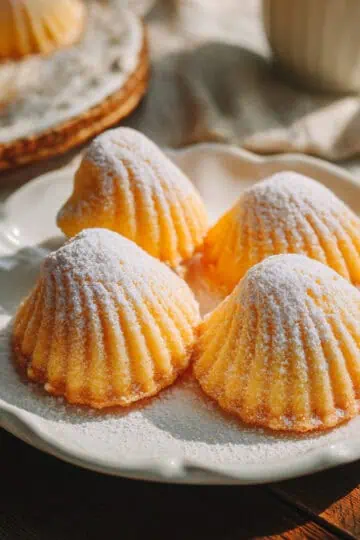
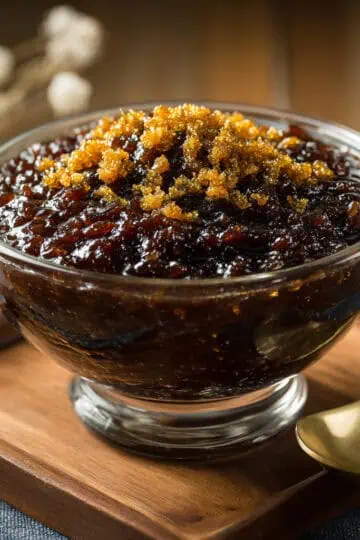
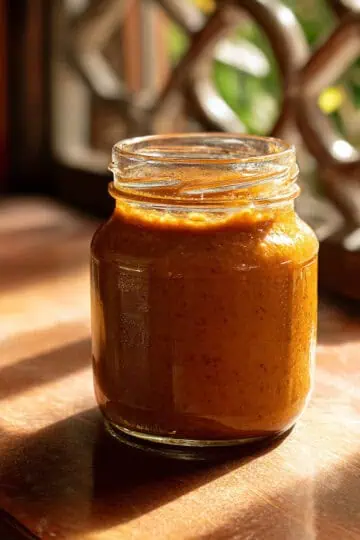
Comments
No Comments